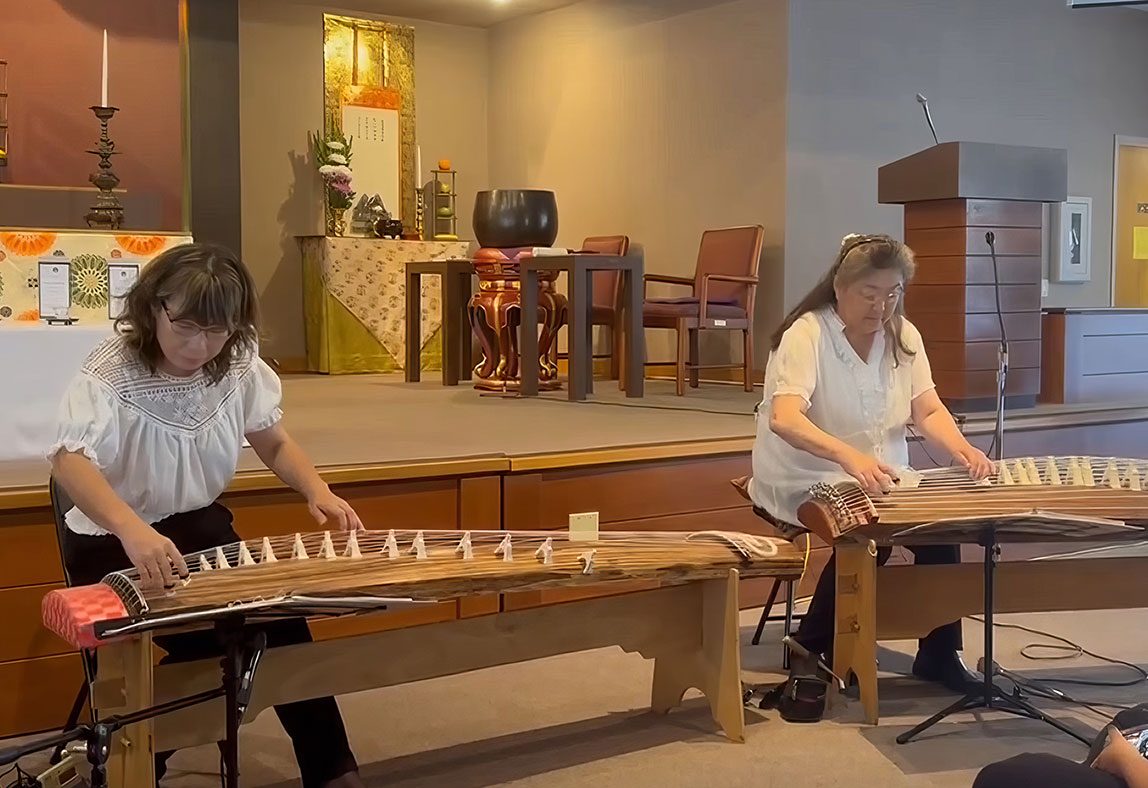
Southern California Koto Ensemble
Founded by Yuki Easter, the SoCal Koto Ensemble brings the enchanting sounds of traditional Japanese music to Southern California.
The group specializes in performances featuring the koto, a beautifully intricate stringed instrument with a history spanning over a thousand years.
Yuki Easter, our founder and lead instructor, received her koto instructor’s license from the prestigious Sawai Koto Academy of Music in Tokyo, Japan in 1996. With a passion for sharing Japanese culture through music, Yuki and our ensemble have been performing at various cultural events throughout San Diego County since 1993, including regular appearances at the Japanese Friendship Garden of San Diego.
category:
Traditional Japanese Music
Peformers:
Yuki Easter
Kumiko Esparza
PERFORMANCE TIME
6:00pm
The Koto
The koto, also known as kin, is a traditional Japanese board zither. It features 13 silk strings and movable bridges, with a body crafted from paulownia wood measuring approximately 190 cm (74 inches) in length. Traditionally, when the musician kneels or sits on the floor, the koto is elevated using two legs or a bridge-storage box. However, in contemporary concert settings, it’s often placed on a stand, allowing the performer to sit in a chair.
Musicians play the koto by plucking its strings with the thumb and first two fingers of the right hand, which are equipped with ivory plectrums called tsume. Since the 16th century, the left hand has been used to alter pitch or timbre by pressing or manipulating the strings to the left of the bridges. The instrument employs various pentatonic tunings, depending on the musical style being performed.
The koto was introduced to the Japanese court in the 8th century, where it was referred to as the gakusō. By the 16th century, schools teaching koto to the bourgeoisie were established. Two prominent schools—Ikuta (founded in the 17th century) and Yamada (established in the 18th century)—continue to operate today.
The koto repertoire primarily consists of solo pieces (danmono) and chamber music (sankyoku). In sankyoku performances, the koto player often sings while playing the instrument.








